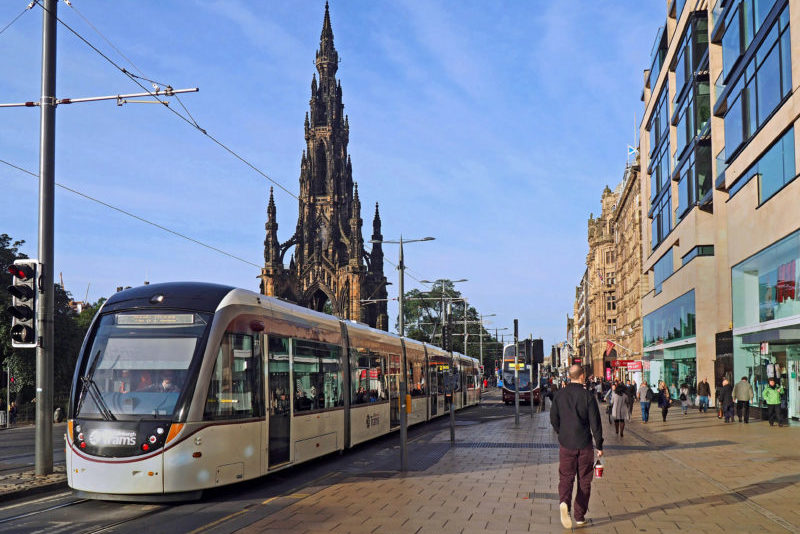
A ten-year plan has been unveiled to deliver a better connected and net zero carbon transport system in Edinburgh.
The City of Edinburgh Council said that the blueprint has been inspired by ‘forward-thinking’ cities around the world.
Included in the plan is a commitment to encourage a change in public behaviour towards the use of sustainable transport, through the expansion of the tram and mass rapid transit network, improvements to bus routes, the creation of ‘mobility hubs’ and introducing a city operations centre to monitor traffic.
Additionally, the plan pledges to create more liveable places less dominated by motor traffic and to build on Edinburgh’s network of walking and cycling routes. Further to this is the planned implementation of the concept that local services should be within a ten-minute walk from neighbourhoods.
The council laid out the following timeline for the plans:
2023 – Delivering now, planning for the future:
Construction of tram route to Newhaven will be complete and operational; a comprehensive review of bus routes in the city will have taken place; a Low Emission Zone will be in operation; we will have introduced a Workplace Parking Levy, subject to consultation and approval; Council-owned public transport companies will have been reformed to offer better integration and value for money.
2025 – Bolder actions:
A comprehensive mass rapid transit plan for the city and region will be completed, including new bus and tram systems; the business case for a north-south tram line will be agreed, linking Granton to the BioQuarter and beyond; a new bus route network will be in place; iconic streets will become increasingly traffic free; George Street will be transformed; the development of a strategic network of walking/wheeling and cycle routes will open up active travel for all; the 20-minute neighbourhoods concept will be starting to deliver local benefits.
2030 – A city transformed:
The mass transit network, including tram, will have been extended west; the city’s seven park and ride facilities will have been upgraded; some arterial routes will be used for mass commuting by bike; the city centre will be largely car-free; a comprehensive city freight and servicing operations system will be in place; the implementation of the Waverley Station Masterplan will be underway.
Transport and environment convener at The City of Edinburgh Council, councillor Lesley Macinnes, said, “Edinburgh is a truly unique city in terms of its heritage, architecture and striking landscape, home to some of history’s greatest innovators. Now we want to push the boundaries as we look to the future of transport and mobility here.
“The finalised city mobility plan recognises the need to revolutionise the way we move around the capital if we are to tackle the host of challenges we face, both locally and on a global scale. Transport is the biggest generator of carbon emissions in Edinburgh and our commitment to be net zero carbon by 2030 depends on a step-change in the way we travel, a change which would also significantly impact on air quality, congestion and road safety.
“More than that, our approach to transport addresses poverty and the cost of travel, the barriers facing those with mobility difficulties and the economic benefits of a better-connected, liveable environment. This is a bold, forward-looking strategy, befitting of this pioneering city, which will transform our streets, neighbourhoods and connections with the rest of the world for generations to come.”








